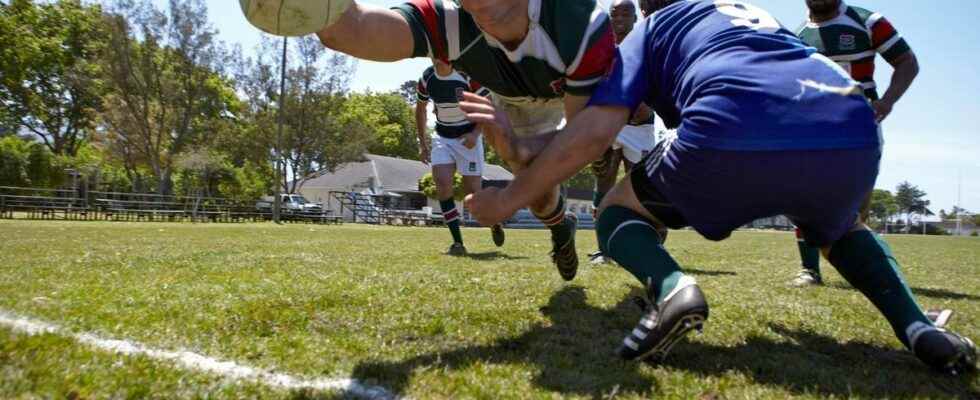Published on
Updated
Reading 3 mins.
Scrums, rucks, tackles… Throughout their careers, rugby players put their strength and resistance to the test, sometimes to the detriment of their health and more particularly their head.
Signs of early dementia in a rugby champion
To avoid the risks associated with repeated shocks, rugby authorities are trying to react. The Women’s Rugby World Cup – which takes place in New Zealand until November 12 – is placed under the sign of the health of the participants.
“The practice of rugby is evolving, because it represents a certain number of dangers”, admits Roger Salamon, President of the Medical Committee of the French Rugby Federation. According to a recent study Scotland, international rugby players are twice as likely to develop a neurodegenerative disease compared to the rest of the population.
Faced with these risks, the speeches and testimonies of former rugby players are multiplying. Former England hooker Steve Thompson, 44, has admitted to suffering from dementia praecox. Rugby world champion with the XV de la Rose in 2003, he no longer has any memories of the competition. He is part of a group of former players who filed a complaint in July 2022 against World Rugby, the international federation, and the English and Welsh federations.
A rugby world under the sign of health
“Rugby World Cup 2021 will set the bar even higher for player health standards at a Rugby World Cup and that’s exactly what needs to be done.”says World Rugby chief executive Alan Gilpin, on the website of the international federation.
The question of the practice of rugby among women also raises health issues. “Women’s health considerations are often very different from men’s, so we can’t approach them in the same way”explains, on the World Rugby website, Dr Chintoh at the head of the Federation’s initiative to focus on women’s health.
Throughout the tournament, new measures are tested. Among these key measures, the provision for all teams of connected mouth guards. They make it possible to measure all the impacts on the head suffered by a player during a match or training. For now, this initiative is part of a study of an unprecedented scale carried out in partnership with the New Zealand University of Otago. Depending on the results of this study, World Rugby may have to modify or adapt the rules of the sport.
A disparity of support between the level of the players
In addition, there are disparities between the management of possible concussions between the professional and international level compared to the amateur level during a meeting. In professionals, in case of risk of concussion, a match doctor can take the decision to take the player out, the time of immediate tests, called HIA 1. Depending on the result, other tests can be carried out within hours which follow, which can go so far as to prohibit the player from playing rugby for ten days.
“For fans, it is difficult to send a doctor to each match”, explains Roger Salamon. In the event of a concussion, the French Rugby Federation has created a third card, the blue card. If he came out, “the player must rest and stop playing”says Professor Roger Salamon.
Constant efforts to reduce the risk of concussion
“Most injuries come from the tackle, either received or given”, explains the specialist. To make the practice always safer, the rules are constantly evolving. “Tie” tackles at shoulder level are prohibited. The impact must be lower. As soon as a player touches an opponent’s head, it is a red card – synonymous with the player’s expulsion.
Read also

Limiting the impacts also involves training and raising awareness among young players, starting in schools and training centres. “There are continuous efforts being made to reduce the risk of injury”, continues Professor Roger Salamon. According to him, “the best progress will come from pedagogy”.
Result of these measures: the game tends to approach the sport of avoidance, one of the origins of rugby, even if it is not the primary motivation.
“We work to prevent players from going head to head when they have the ball. This allows the back lines to play so that it is not the pack that advances”explains the specialist.
This development, favorable to the game, makes it possible to keep rugby attractive for spectators. “The public needs to see matches like the XV of France, Toulouse or Mont-de-Marsan. These teams play the ball. If they had continued to play as before, the public would have stripped the stadium”concludes the specialist.
